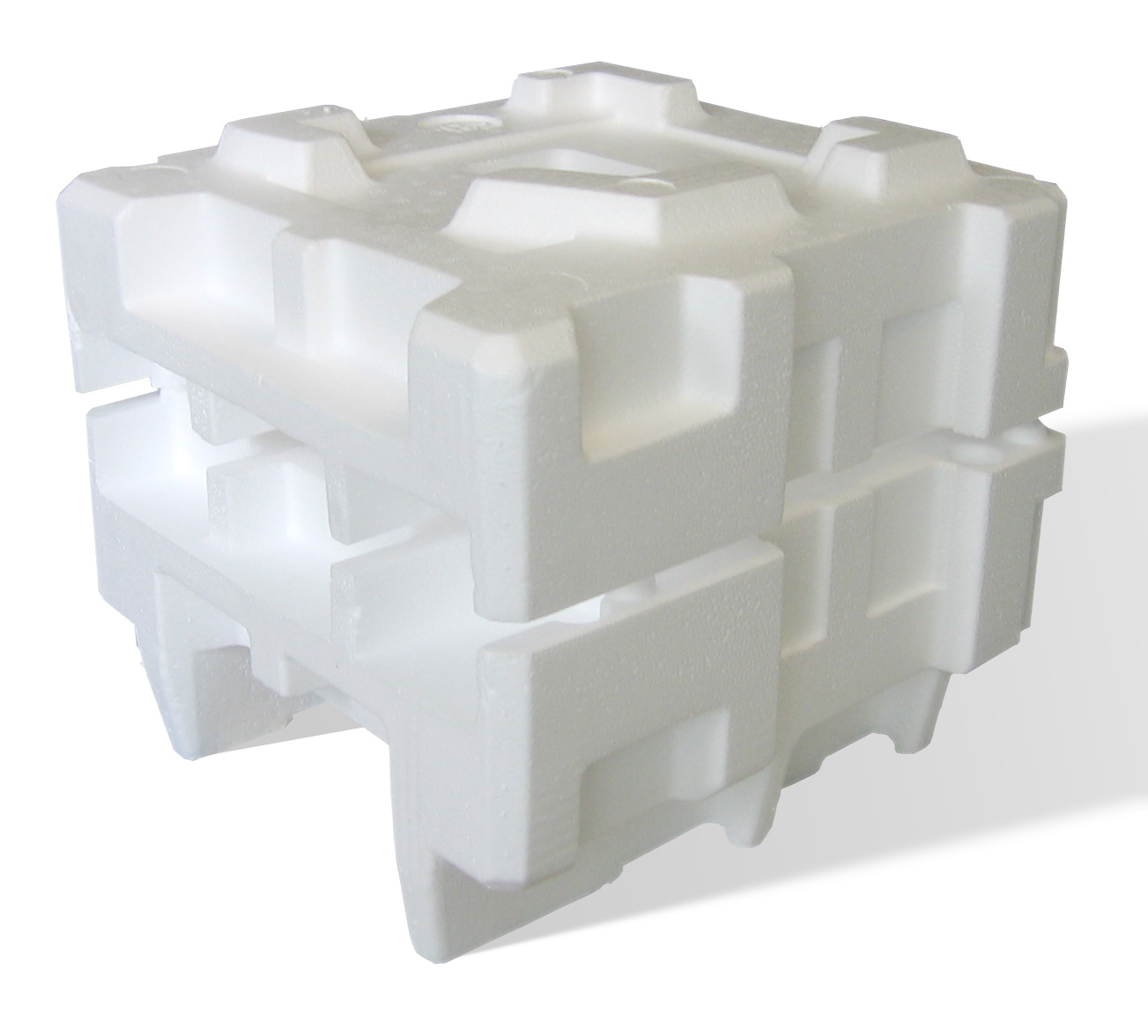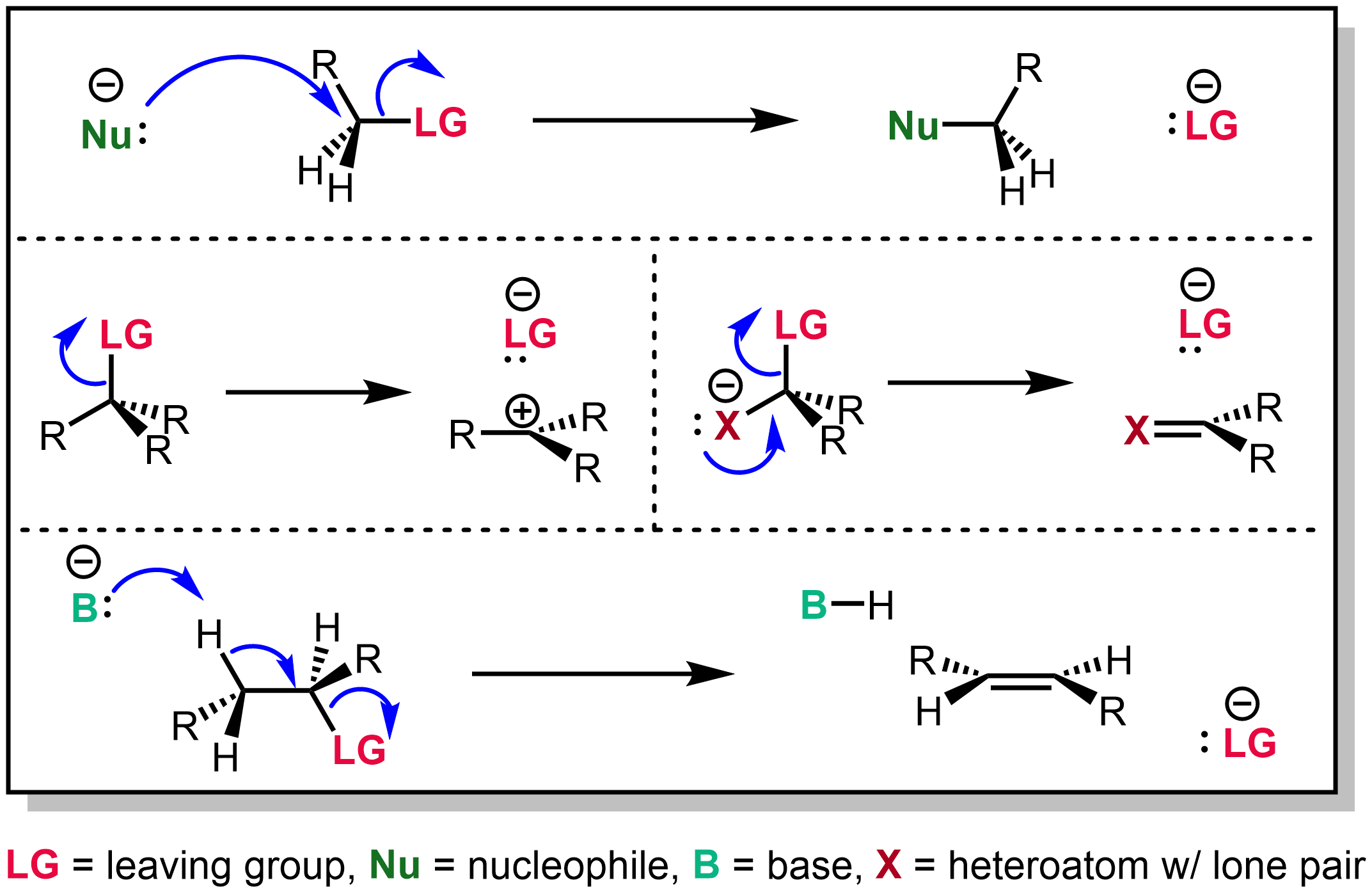|
Elimination Reaction Of Free Radicals
An elimination reaction of free radicals is the mechanism by which free radicals can undergo an elimination reaction to form olefins. Such reactions are usually not major pathways for radical mediated reactions. Reaction mechanisms Radicals can undergo a disproportionation reaction through a radical elimination mechanism (See Fig. 1). Here a radical abstracts a hydrogen atom from another same radical to form two non-radical species: an alkane and an alkene. Radicals can also undergo an elimination reaction to generate a new radical as the leaving group. For example, when polystyrene decomposes upon heating at a temperature above 300°C, a styrene monomer is generated via a radical elimination mechanism (See Fig. 2). Here, the new radical is generated on the polymer chain, which can further undergo a similar type of reaction to generate more styrene molecules. This process is known as the radical mediated depolymerization of polystyrene. Radical elimination reactions ... [...More Info...] [...Related Items...] OR: [Wikipedia] [Google] [Baidu] |
Radical Disproportionation Via Radical Elimination Mechanism
Radical may refer to: Politics and ideology Politics * Radical politics, the political intent of fundamental societal change *Radicalism (historical), the Radical Movement that began in late 18th century Britain and spread to continental Europe and Latin America in the 19th century *Radical Party (other), several political parties *Radicals (UK), a British and Irish grouping in the early to mid-19th century * Radicalization Ideologies * Radical chic, a term coined by Tom Wolfe to describe the pretentious adoption of radical causes *Radical feminism, a perspective within feminism that focuses on patriarchy *Radical Islam, or Islamic extremism *Radical veganism, a radical interpretation of veganism, usually combined with anarchism *Radical Reformation, an Anabaptist movement concurrent with the Protestant Reformation Science and mathematics Science * Radical (chemistry), an atom, molecule, or ion with unpaired valence electron(s) *Radical surgery, where diseased tissue or l ... [...More Info...] [...Related Items...] OR: [Wikipedia] [Google] [Baidu] |
Polystyrene
Polystyrene (PS) is a synthetic polymer made from monomers of the aromatic hydrocarbon styrene. Polystyrene can be solid or foamed. General-purpose polystyrene is clear, hard, and brittle. It is an inexpensive resin per unit weight. It is a poor barrier to oxygen and water vapour and has a relatively low melting point. Polystyrene is one of the most widely used plastics, the scale of its production being several million tonnes per year. Polystyrene can be naturally transparent, but can be colored with colorants. Uses include protective packaging (such as packing peanuts and in the jewel cases used for storage of optical discs such as CDs and occasionally DVDs), containers, lids, bottles, trays, tumblers, disposable cutlery, in the making of models, and as an alternative material for phonograph records. As a thermoplastic polymer, polystyrene is in a solid (glassy) state at room temperature but flows if heated above about 100 °C, its glass transition temperature ... [...More Info...] [...Related Items...] OR: [Wikipedia] [Google] [Baidu] |
Acyl-CoA Dehydrogenase
Acyl-CoA dehydrogenases (ACADs) are a class of enzymes that function to catalyze the initial step in each cycle of fatty acid β-oxidation in the mitochondria of cell (biology), cells. Their action results in the introduction of a :wikt:trans-, trans double-bond between C2 (α) and C3 (β) of the acyl-CoA thioester substrate. Flavin adenine dinucleotide (FAD) is a required co-factor in addition to the presence of an active site glutamate in order for the enzyme to function. The following reaction is the oxidation of the fatty acid by FAD to afford an α,β-unsaturated fatty acid thioester of Coenzyme A: ACADs can be categorized into three distinct groups based on their specificity for short-, medium-, or long-chain fatty acid acyl-CoA substrates. While different dehydrogenases target fatty acids of varying chain length, all types of ACADs are mechanistically similar. Differences in the enzyme occur based on the location of the active site along the amino acid sequence. ACADs ... [...More Info...] [...Related Items...] OR: [Wikipedia] [Google] [Baidu] |
Flavin Adenine Dinucleotide
Flavin may refer to: Placename * Flavin, Aveyron, a commune in southern France Surname * Adrian Flavin (born 1979), a professional rugby player * Christopher Flavin, president of the Worldwatch Institute * Dan Flavin (1933–1996), a minimalist artist famous for using fluorescent light fixtures * Dan Flavin (politician), Louisiana politician * James Flavin (1906–1976), an American character actor * Jennifer Flavin (born 1968), a former model and wife of actor Sylvester Stallone * Martin Flavin (1883–1967), an American playwright and novelist * Martin Flavin (politician) (1841–1917), Irish Nationalist politician, Member of Parliament (MP) for Cork, 1891–1892 * Michael Joseph Flavin (1866-1944), Irish Nationalist politician, Member of Parliament (MP) for North Kerry, 1896-1918 * Mick Flavin Mick Flavin (born 3 August 1950) is an Irish country singer from Ballinamuck in County Longford. Flavin recorded his first album in Athlone in June 1986. His first big hit bei ... [...More Info...] [...Related Items...] OR: [Wikipedia] [Google] [Baidu] |
Acyl-CoA
Acyl-CoA is a group of coenzymes that metabolize fatty acids. Acyl-CoA's are susceptible to beta oxidation, forming, ultimately, acetyl-CoA. The acetyl-CoA enters the citric acid cycle, eventually forming several equivalents of ATP. In this way, fats are converted to ATP, the universal biochemical energy carrier. Functions Fatty acid activation Fats are broken down by conversion to acyl-CoA. This conversion is one response to high energy demands such as exercise. The oxidative degradation of fatty acids is a two-step process, catalyzed by acyl-CoA synthetase. Fatty acids are converted to their acyl phosphate, the precursor to acyl-CoA. The latter conversion is mediated by acyl-CoA synthase" :acyl-P + HS-CoA → acyl-S-CoA + Pi + H+ Three types of acyl-CoA synthases are employed, depending on the chain length of the fatty acid. For example, the substrates for medium chain acyl-CoA synthase are 4-11 carbon fatty acids. The enzyme acyl-CoA thioesterase takes of the acyl-Co ... [...More Info...] [...Related Items...] OR: [Wikipedia] [Google] [Baidu] |
Depolymerization
Depolymerization (or depolymerisation) is the process of converting a polymer into a monomer or a mixture of monomers. This process is driven by an increase in entropy. Ceiling temperature The tendency of polymers to depolymerize is indicated by their ceiling temperature. At this temperature, the enthalpy of polymerization matches the entropy gained by converting a large molecule into monomers. Above the ceiling temperature, the rate of depolymerization is greater than the rate of polymerization, which inhibits the formation of the given polymer. Applications Depolymerization is a very common process. Digestion of food involves depolymerization of macromolecules, such as proteins. It is relevant to polymer recycling. Sometimes the depolymerization is well behaved, and clean monomers can be reclaimed and reused for making new plastic. In other cases, such as polyethylene, depolymerization gives a mixture of products. These products are, for polyethylene, ethylene, propylen ... [...More Info...] [...Related Items...] OR: [Wikipedia] [Google] [Baidu] |
Monomer
In chemistry, a monomer ( ; ''mono-'', "one" + '' -mer'', "part") is a molecule that can react together with other monomer molecules to form a larger polymer chain or three-dimensional network in a process called polymerization. Classification Monomers can be classified in many ways. They can be subdivided into two broad classes, depending on the kind of the polymer that they form. Monomers that participate in condensation polymerization have a different stoichiometry than monomers that participate in addition polymerization: : Other classifications include: *natural vs synthetic monomers, e.g. glycine vs caprolactam, respectively *polar vs nonpolar monomers, e.g. vinyl acetate vs ethylene, respectively *cyclic vs linear, e.g. ethylene oxide vs ethylene glycol, respectively The polymerization of one kind of monomer gives a homopolymer. Many polymers are copolymers, meaning that they are derived from two different monomers. In the case of condensation polymerizations, ... [...More Info...] [...Related Items...] OR: [Wikipedia] [Google] [Baidu] |
Styrene
Styrene () is an organic compound with the chemical formula C6H5CH=CH2. This derivative of benzene is a colorless oily liquid, although aged samples can appear yellowish. The compound evaporates easily and has a sweet smell, although high concentrations have a less pleasant odor. Styrene is the precursor to polystyrene and several copolymers. Approximately 25 million tonnes of styrene were produced in 2010, increasing to around 35 million tonnes by 2018. Natural occurrence Styrene is named after storax balsam (often commercially sold as ''styrax''), the resin of Liquidambar trees of the Altingiaceae plant family. Styrene occurs naturally in small quantities in some plants and foods (cinnamon, coffee beans, balsam trees and peanuts) and is also found in coal tar. History In 1839, the German apothecary Eduard Simon isolated a volatile liquid from the resin (called ''storax'' or ''styrax'' (Latin)) of the American sweetgum tree (''Liquidambar styraciflua''). He called ... [...More Info...] [...Related Items...] OR: [Wikipedia] [Google] [Baidu] |
Leaving Group
In chemistry, a leaving group is defined by the IUPAC as an atom or group of atoms that detaches from the main or residual part of a substrate during a reaction or elementary step of a reaction. However, in common usage, the term is often limited to a fragment that departs with a pair of electrons in heterolytic bond cleavage. In this usage, a leaving group is a less formal but more commonly used synonym of the term ''nucleofuge''. In this context, leaving groups are generally anions or neutral species, departing from a neutral or cationic substrates, respectively, though in rare cases, cations leaving from a dicationic substrate are also known. A species' ability to serve as a leaving group depends on its ability to stabilize the additional electron density that results from bond heterolysis. Common anionic leaving groups are halides such as Cl−, Br−, and I−, and sulfonate esters such as tosylate (TsO−), while water (H2O), alcohols (HOR), and amines (R3N) are common neu ... [...More Info...] [...Related Items...] OR: [Wikipedia] [Google] [Baidu] |
Depolymerization Of Polystyrene Via Radical Elimination Mechanism
Depolymerization (or depolymerisation) is the process of converting a polymer into a monomer or a mixture of monomers. This process is driven by an increase in entropy. Ceiling temperature The tendency of polymers to depolymerize is indicated by their ceiling temperature. At this temperature, the enthalpy of polymerization matches the entropy gained by converting a large molecule into monomers. Above the ceiling temperature, the rate of depolymerization is greater than the rate of polymerization, which inhibits the formation of the given polymer. Applications Depolymerization is a very common process. Digestion of food involves depolymerization of macromolecules, such as proteins. It is relevant to polymer recycling. Sometimes the depolymerization is well behaved, and clean monomers can be reclaimed and reused for making new plastic. In other cases, such as polyethylene, depolymerization gives a mixture of products. These products are, for polyethylene, ethylene, propylen ... [...More Info...] [...Related Items...] OR: [Wikipedia] [Google] [Baidu] |
Alkene
In organic chemistry, an alkene is a hydrocarbon containing a carbon–carbon double bond. Alkene is often used as synonym of olefin, that is, any hydrocarbon containing one or more double bonds.H. Stephen Stoker (2015): General, Organic, and Biological Chemistry'. 1232 pages. Two general types of monoalkenes are distinguished: terminal and internal. Also called α-olefins, terminal alkenes are more useful. However, the International Union of Pure and Applied Chemistry (IUPAC) recommends using the name "alkene" only for acyclic hydrocarbons with just one double bond; alkadiene, alkatriene, etc., or polyene for acyclic hydrocarbons with two or more double bonds; cycloalkene, cycloalkadiene, etc. for cyclic ones; and "olefin" for the general class – cyclic or acyclic, with one or more double bonds. Acyclic alkenes, with only one double bond and no other functional groups (also known as mono-enes) form a homologous series of hydrocarbons with the general formula wit ... [...More Info...] [...Related Items...] OR: [Wikipedia] [Google] [Baidu] |




